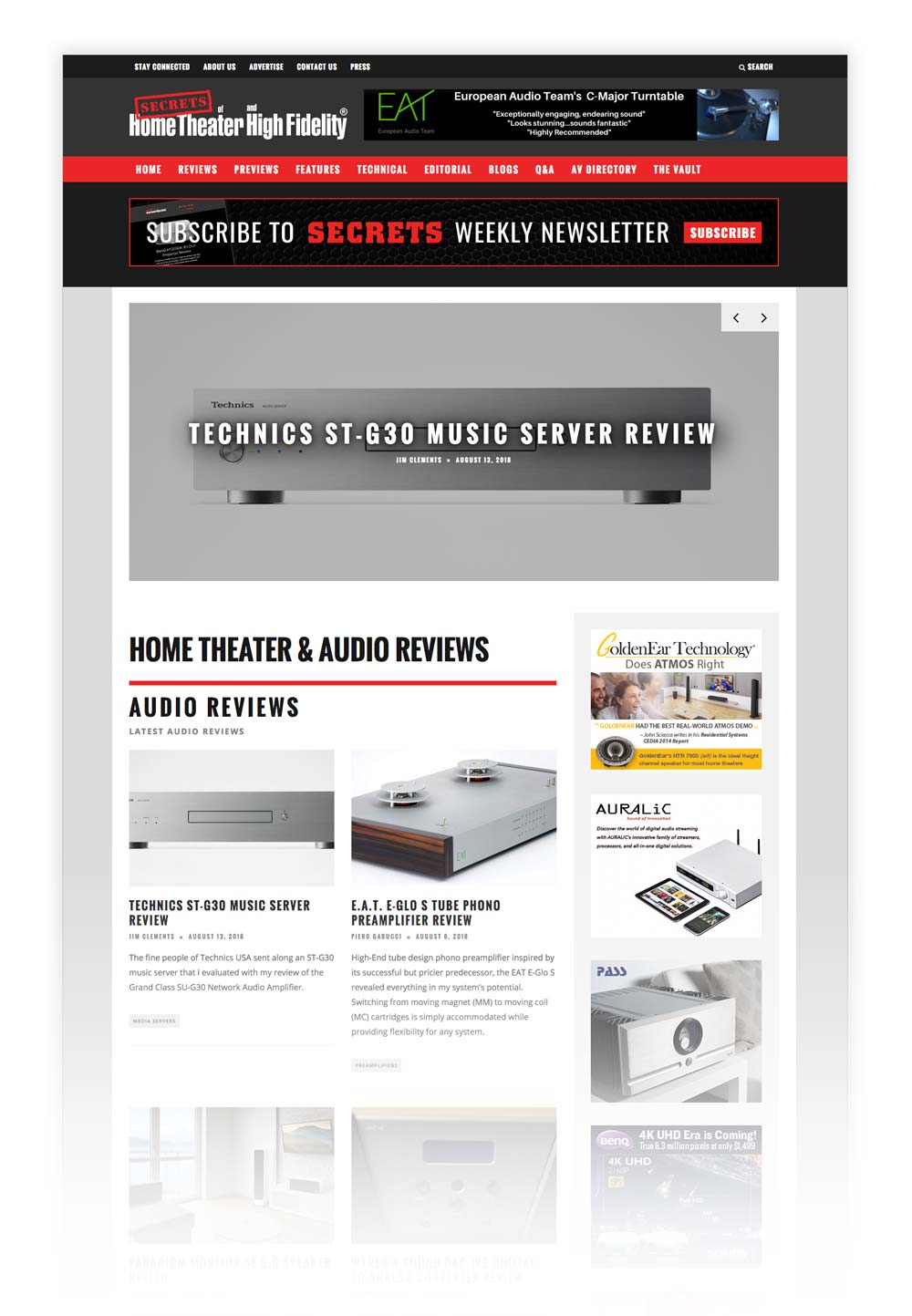About

John E. Johnson, Jr. holds four university degrees in the bio-science fields, and has published numerous scientific books, along with dozens of scientific articles on biomedical research topics as well as imaging technology. He was the Founder and Editor-in-Chief of two medical/scientific journals for 20 years.
John holds several patents, including one on high resolution image analysis and one on a surgical instrument. Dr. Johnson has been affiliated with NASA, The National Institutes of Health, The Johns Hopkins University, Stanford Research Institute, and The University of California at Berkeley.
John is the Founder of Secrets of Home Theater and High Fidelity and has served as the Editor-in-Chief for 24 years. John has been involved in audio and video for more than 50 years, having built radio transmitters, amplifiers, turntables, and speakers from scratch. He is President of the consulting firm Scientific Design and Information, Inc., which is based in Redwood City, California. He is also the founder of the original Northern California Audio Video Association.
John is also a musician and photographer.
“Being a musician helps me in evaluating audio equipment because I know first hand what musical instruments sound like. I have played the drums for 50 years and am currently taking piano and organ (jazz) lessons.”
The development and launch of SECRETS of Home Theater and High Fidelity
SECRETS was the first A/V review magazine to be published on the internet, having begun in 1994. The initial content for the magazine was a hard copy publication by the same name that I authored in the early 1990’s. This hardcopy publication was an explanation of the technologies that were relevant to A/V products at the time.
I elected to publish SECRETS on the Iinternet for several reasons. First, it was too expensive to publish the magazine in print, considering the distribution costs and the cost of color printing. Second, the time between writing-to-publishing was too long. The internet provided the flexibility to publish a review immediately.
Early on, I introduced analytics into the product reviews that I conducted and expanded the analytic capabilities to some of our team. I bench test most products that I review, as bench testing provides an objective appraisal of the products’ performance. More about the details of our test protocols is included in my Behind the Scenes-In the Lab series.
Over the course of my many years in A/V, I have tested and authored over 400 A/V product reviews, and I am very familiar with the quality of many manufacturers. I have regularly consulted with manufacturers over the past 20 plus years about ways of improving their products in terms of basic electronic design, features, and ease of use. I consult about products in all stages of development, from design to final product.

This photo is from Glacier Bay, Alaska. The original is in color, and I converted it to black and white, then added some dodging and burning as well as HDR (High Dynamic Range).
Photography – My years behind the camera and photo editing
Photography and photo editing software development are long term interests. I expanded my product reviews to encompass cameras and video cameras, in addition to audio equipment. As with audio and video products, my reviews of photography equipment include bench testing of the equipment performance.
I have been a photographer for more than 2/3 of a century, having begun when I was 5 years old. My mother gave me a Kodak Brownie camera. Black and white film was about 50 cents per roll and developing was a dollar. I also tried color film, which cost twice that of black and white.
Film is not extinct now that digital cameras are so pervasive, but it is only a tiny fraction of the former photographic market and consumer use. Many people have moved to using their cell phone cameras for all their photos, because cell phone cameras are very good, but mostly because they have their cell phone with them all the time, so it is convenient.

This image is from my Gibbs Garden, Georgia collection.
Currently, I have several cameras, including a DSLR (Digital Single-Lens Reflex) and CSC (Compact Systems Camera) which also uses a single lens, but has no mirror and is not reflex.
I have found that being a photographer has helped me in evaluating the visual quality and composition of movies.
I like to photograph landscapes and gardens. For gardens, I use a digital infra-red camera (DSLR).
For gardens, I use a digital infra-red camera (DSLR).